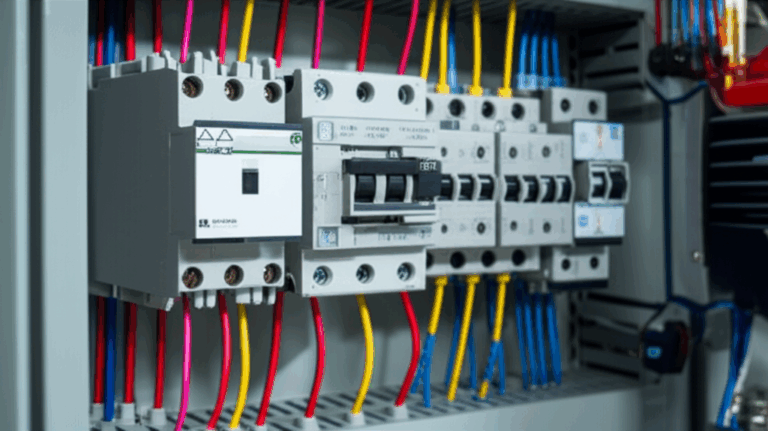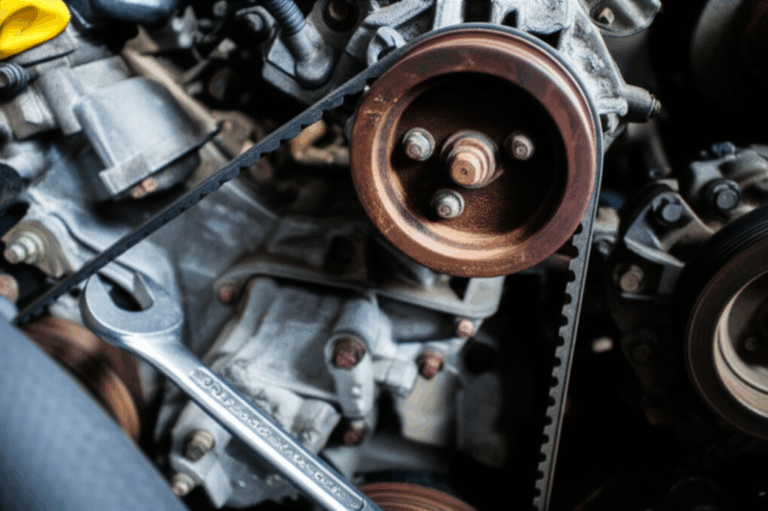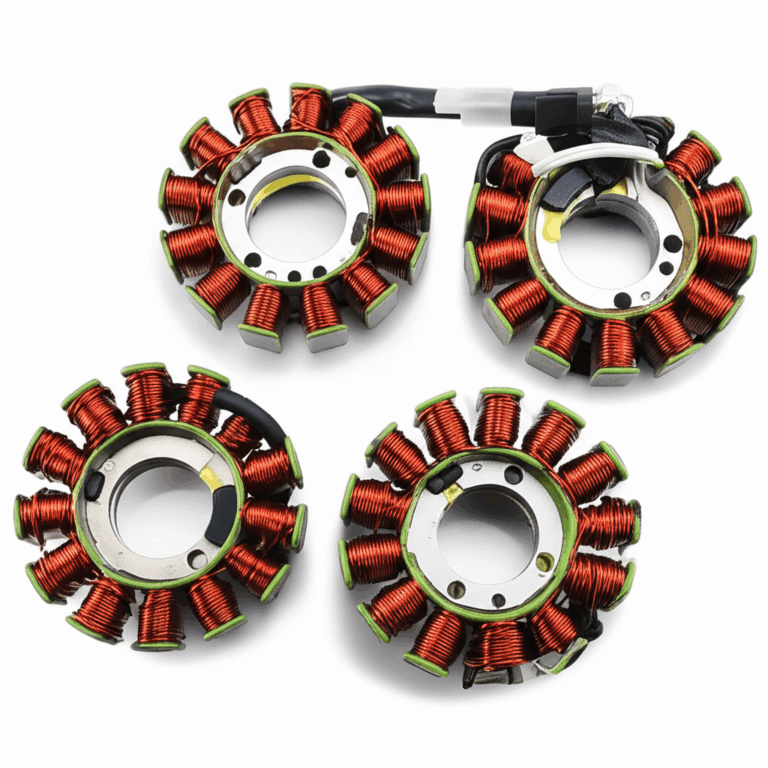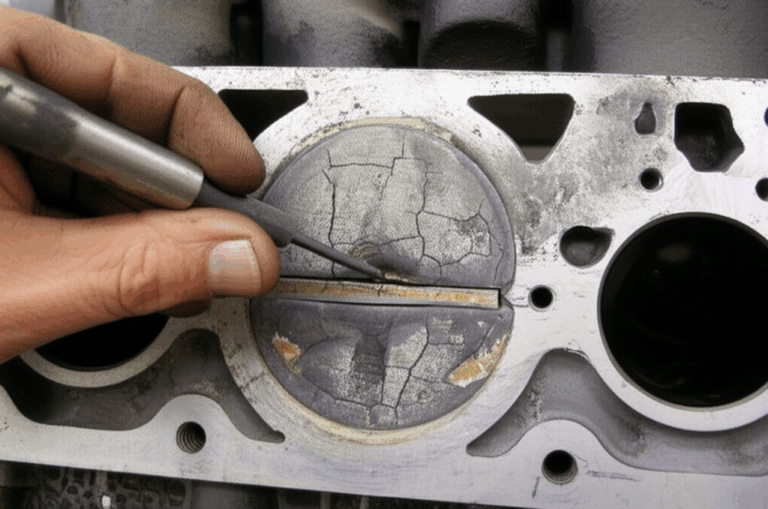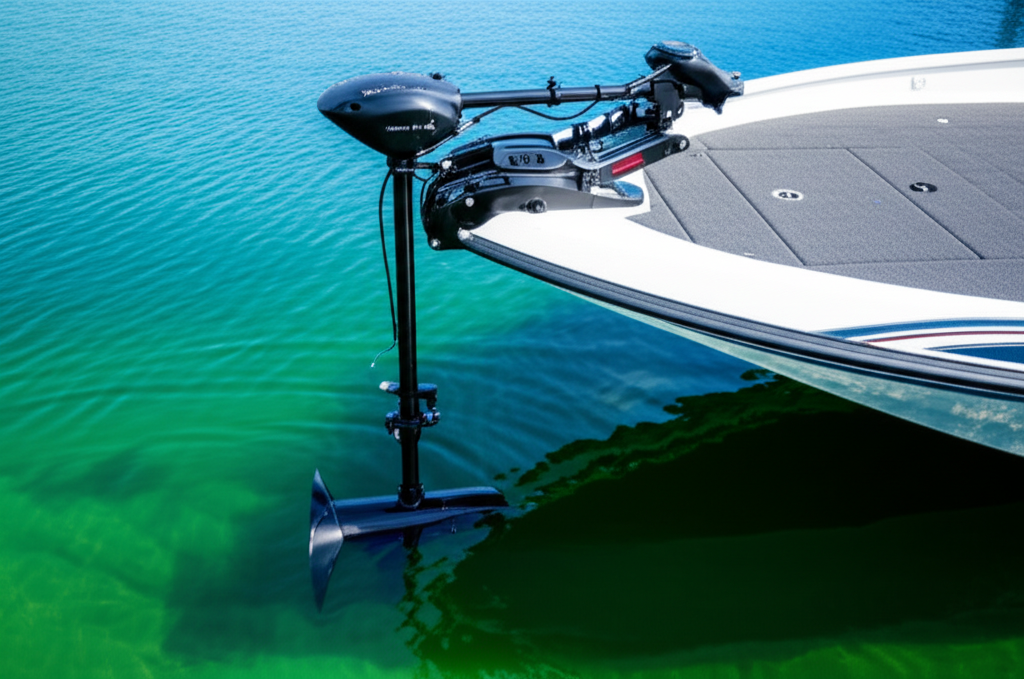
What Is a Trolling Motor? My Essential Guide to Electric Boat Propulsion and a Real Fishing Advantage
Table of Contents
- Introduction: How a Quiet Little Motor Changed My Fishing Days
- What Exactly Is a Trolling Motor
- How a Trolling Motor Works in Plain English
- Why Anglers Use Trolling Motors: The Real-World Benefits
- Types of Trolling Motors and How to Choose the Right Setup
- Bow Mount vs Transom Mount
- Freshwater vs Saltwater Models
- Foot Control vs Hand Control vs Wireless Remote and GPS
- Key Features and Technologies That Matter
- Thrust and Sizing
- Shaft Length
- Voltage Options
- GPS, Anchor Mode, and Autopilot
- Integrated Sonar and Transducers
- Digital Maximizer and Variable Speed
- Brushless Motors and Weedless Props
- The Essential Components of a Trolling Motor System
- Trolling Motor vs Main Outboard: What’s the Difference
- How I Size a Trolling Motor for Different Boats
- Batteries, Wiring, and Runtime: What I’ve Learned the Hard Way
- Installation Tips That Save Time and Headaches
- Maintenance and Troubleshooting You Can Do at Home
- Advanced Tech and Brand Landscape
- Inside the Motor: Why Laminations and Core Materials Affect Performance
- Cost, Value, and Whether a Trolling Motor Is Worth It
- Safety, Etiquette, and Smart Use
- Conclusion: The Small Motor That Makes a Big Difference
Introduction: How a Quiet Little Motor Changed My Fishing Days
When I bought my first bow mount trolling motor I thought I was just getting a quiet helper. I was wrong. It changed how I fish and how I move a boat. I could hold a bass boat in wind without dropping anchor. I could slip a jon boat along a weedline without spooking fish. I could steer a kayak one-handed while pitching to stumps. That little electric boat motor gave me precision control, stealth, and more time with a rod in my hand.
If you have heard the term trolling motor and wondered what it is or if you need one you are in the right place. I will keep this simple. I will share what has worked for me on freshwater lakes, saltwater flats, and everything in between.
What Exactly Is a Trolling Motor
A trolling motor is an electric motor that drives a small propeller underwater and it is meant for slow, precise boat movement. It runs off a deep-cycle battery bank. It mounts on the bow or the transom. It is separate from your main outboard or inboard engine. It is not for speed. It is for control.
I use mine to position the boat quietly while I fish. I nudge along a shoreline. I hold on a brush pile. I correct for wind and current. Think of it as a stealthy, low-speed, high-precision tool.
How a Trolling Motor Works in Plain English
Here is the basic mechanics. An electric motor spins a propeller underwater. That creates thrust measured in pounds. The motor draws power from one or more batteries at 12, 24, or 36 volts. You control direction and speed with a foot pedal, a hand tiller, or a wireless remote.
Steering happens in the motor head or through internal steering. Some units pivot with a cable. Others use electric steering with power assist. Variable speed control adjusts amperage draw. More throttle equals more amps and less runtime. Less throttle equals fewer amps and longer runtime.
Modern motors add brains to the brawn. GPS modules enable Spot-Lock or anchor mode so the boat holds position on its own. Autopilot features follow a heading, a contour, or a custom route. Some models integrate sonar or a transducer that talks to your fish finder.
Why Anglers Use Trolling Motors: The Real-World Benefits
- Precision boat control: I tap a button and the motor holds me over a rock pile. Spot-Lock saves casts and catches fish. It also helps when I rig a rod or retie a lure because the boat does not drift.
- Stealth and silence: Electric motors make far less noise than gas engines. Fish stay calmer. In shallow water that matters.
- Hands-free fishing: With a foot control or wireless remote I steer while I cast. I do not juggle a tiller and a rod.
- Access to skinny water: I run the motor in shallow water where an outboard would hit bottom. I slide into pockets that others skip.
- Versatility: I use it for bass, crappie, walleye, and inshore saltwater. It helps with slow trolling, drifting, and station keeping.
Once you fish with a GPS trolling motor that holds position you start to wonder how you ever did without it.
Types of Trolling Motors and How to Choose the Right Setup
Bow Mount vs Transom Mount
- Bow mount trolling motor: This is my go-to on fishing boats. It pulls from the front which gives better control and faster course corrections. Most run with a foot pedal or wireless remote. They need a mounting bracket and a solid deck.
- Transom mount trolling motor: This is simpler and cheaper. It clamps to the stern. It suits small boats, jon boats, canoes, and many kayaks. You steer with a hand tiller. It sets up fast.
Freshwater vs Saltwater Models
- Freshwater trolling motor: Standard coatings and hardware. Great for lakes and rivers.
- Saltwater trolling motor: Extra corrosion protection, sealed electronics, and sacrificial anodes. These cost more for good reason. Salt eats lesser gear. I rinse after every salt trip and I still prefer a saltwater rated model in brine.
Foot Control vs Hand Control vs Wireless Remote and GPS
- Foot control: I love foot pedals for bass fishing. I keep both hands on the rod. The pedal offers precise speed and steering.
- Hand control (tiller handle motor): Simple and reliable. It shines on small transom rigs and kayaks.
- Wireless remote and GPS-enabled: The dream combo for spot fishing and windy days. I use remotes to Spot-Lock, change speed, or point the boat while I walk the deck. Some brands add a wearable remote or phone app.
Key Features and Technologies That Matter
Thrust and Sizing
Thrust is the push the motor delivers. It is measured in pounds. I follow a simple guideline. About 2 pounds of thrust for every 100 pounds of fully loaded boat weight. If I fish in strong currents or heavy chop I add 10 to 20 pounds of thrust. Undersizing hurts. It works too hard and drains batteries.
Brands list popular thrust ratings like 30, 40, 55, 70, 80, and 112 pounds. A kayak or small jon boat often runs fine on 30 to 55 pounds. A bass boat might need 70 to 112 pounds depending on weight and wind.
Shaft Length
Shaft length matters more than many realize. The propeller should sit about 12 inches below the waterline. Too shallow and the prop sucks air which is called cavitation. Cavitation robs thrust and can damage the motor over time. Measure from the mounting surface to the waterline. Add the 12 inches and a little extra for waves. Long shafts suit high bows like pontoons. Shorter shafts work on low-profile boats and kayaks.
Voltage Options
- 12V: Simple and affordable. Pairs with lower thrust motors like 30 to 55 pounds. One battery.
- 24V: More power and efficiency for mid to large boats like 70 to 80 pound thrust models. Two batteries in series.
- 36V: Maximum thrust and long runtime. Think 112 pound thrust units. Three batteries in series.
Higher voltage draws fewer amps at a given power which helps wiring and efficiency.
GPS, Anchor Mode, and Autopilot
Spot-Lock or anchor mode changed my fishing. Tap a button. The motor uses GPS to keep you in place. It fights wind and current. Autopilot and route features keep a heading, follow a shoreline, or trace a contour. If you fish offshore structure or windy points these features feel like cheating in the best way.
Integrated Sonar and Transducers
Some motors include a built-in transducer. This keeps your fish finder wiring clean and protected. Check compatibility with your brand of fish finder. Garmin, Lowrance, and Humminbird have matching setups that make integration smoother.
Digital Maximizer and Variable Speed
Variable speed motors with Digital Maximizer type tech feed only the power needed. That can stretch runtime several times longer than simple 5-speed motors. I have run side by side with friends and watched my battery gauge fall slower while matching boat speed. It is not magic. It is smarter power delivery.
Brushless Motors and Weedless Props
Brushless trolling motors run more efficiently and with less noise. They also last longer because they do not have brushes that wear out. They cost more. They deliver smooth power. Weedless wedge prop designs help in vegetation. They shed grass better and keep you moving in slop where fish love to live.
The Essential Components of a Trolling Motor System
- Motor head and control unit: Houses the brains and the steering.
- Shaft: Usually composite. It resists bending and corrosion better than aluminum.
- Lower unit: Motor and propeller housing. This lives underwater so seals and coatings matter.
- Propeller: Two or three blades. Weedless designs help in thick grass.
- Mounting bracket: The bow mount often includes a quick release bracket for easy removal.
- Power cables and circuit breaker: Use a marine-grade circuit breaker near the battery. Wire size must match the amperage and length.
- Batteries: Deep cycle lead-acid or lithium. Lithium offers high energy density and long cycle life. It costs more up front.
Trolling Motor vs Main Outboard: What’s the Difference
- Primary function: Trolling motors are for precision control. Outboards are for speed and travel.
- Power and speed: Trolling motors deliver low thrust and slow speeds often 2 to 5 mph. Outboards plane a boat and run fast.
- Fuel type: Trolling motors use electricity from batteries. Outboards use gasoline.
- Noise level: Trolling motors run quiet. Outboards make more noise.
- Applications: Trolling motors excel at fishing and precise positioning. Outboards handle long runs and heavy loads.
I use both. The outboard gets me there. The trolling motor lets me fish well when I arrive.
How I Size a Trolling Motor for Different Boats
- Kayak or canoe: 30 to 45 pound thrust on 12V works. Keep weight low. A transom mount or side mount with a tiller handle is common.
- Small jon boat: 40 to 55 pound thrust on 12V fits well. If you carry a lot of gear or fish in wind step up to 55.
- Bass boat: 70 to 80 pound thrust on 24V is a sweet spot for mid-size rigs. Heavy boats or tough wind call for 36V and 112 pounds.
- Pontoon boat: High bow and big wind profile. Go long on shaft and high on thrust. Often 24V or 36V.
- Inshore flats skiff: Saltwater rated bow mount with GPS anchor mode. Current and wind push you around on flats. The motor needs guts.
I also consider the water I fish. River current and big wind eat power. I add thrust to compensate.
Batteries, Wiring, and Runtime: What I’ve Learned the Hard Way
I used to underestimate batteries. I do not anymore. A 12V 100Ah deep-cycle can run a 55 pound thrust motor for about 3 to 5 hours at half throttle in my experience. Conditions change that runtime. Wind, current, and boat weight draw more amps. Variable speed motors with efficient control can stretch runtime a lot because they do not burn power in fixed steps.
- Battery types: Flooded lead-acid costs less. AGM is sealed and durable. Lithium is light, charges fast, and lasts for many cycles. Lithium hits the wallet but it shines for anglers who fish often or carry heavy loads.
- Voltage and wiring: Wire gauge must match amp draw and run length. Longer runs need thicker wire. Always install a circuit breaker sized to your motor.
- Series connections: 24V equals two 12V batteries in series. 36V equals three in series. Label the cables. Mistakes here are expensive.
- Charging: Use a quality marine charger. I prefer multi-bank chargers that top off each battery independently.
I also separate sonar and trolling motor power when I can. It helps reduce interference on the fish finder screen.
Installation Tips That Save Time and Headaches
- Mounting a bow motor: Dry-fit the bracket before drilling. Check the stow and deploy clearance. Make sure the shaft clears the rub rail and the trailer winch post.
- Quick release bracket: Worth it. I remove the motor for storage and service. It also helps if I switch between freshwater and saltwater trips.
- Shaft length setup: Get that prop about 12 inches below the waterline. Err to the longer side for rough water.
- Transducer mounting: Use factory channels if available. It protects cables. Zip ties are a last resort. Do not pinch the cable.
- Circuit breaker placement: As close to the battery positive as practical. This protects the whole run.
Water depth matters. I lift the motor in shallow areas so the prop does not plow bottom. It saves props and fish habitat.
Maintenance and Troubleshooting You Can Do at Home
- Rinse after saltwater use: I rinse the whole unit with fresh water. I wipe it down. Salt hides in seams.
- Propeller checks: I pull the prop and remove fishing line. Line behind the prop can cut seals. That leads to water intrusion. Bad news.
- Hardware and mounts: Tighten bolts and screws. Vibration loosens everything over time.
- Batteries: Charge after each trip. Do not store them dead. For lithium follow the maker’s storage guidance.
- Storage: Stow the motor indoors if possible. If not then cover it. Sun and weather age plastics and seals.
- Noise and vibration: A bent prop or a dinged blade can cause noise. Replace it. Steering cables or electric steer units sometimes need adjustment. Follow your brand’s manual.
Common issues I see include blown breakers from weeds or snagging, loose connections that cause power loss, and interference on sonar from shared power lines. Work through them step by step.
Advanced Tech and Brand Landscape
GPS features are everywhere now and for good reason. Spot-Lock or anchor mode keeps you on the money. Heading lock runs a clean line along a bank. Track record lets you repeat a trolling pass. These tools help you fish more and fiddle less.
I have run and ridden in boats with Minn Kota, Motorguide, Garmin Force, Lowrance Ghost, Newport Vessels, Haswing, Watersnake, and Rhino Trolling Motors. Each brand takes a slightly different path. Garmin Force and Lowrance Ghost lean into brushless efficiency and integrated electronics. Minn Kota popularized Spot-Lock and Digital Maximizer style power control. Motorguide shines with responsive steering and solid GPS control. Freshwater and saltwater variants exist across brands. Salt models add corrosion-resistant hardware and sealed housings which matters in brine.
Integration matters. If you run a Garmin fish finder then a Garmin Force can talk to it natively. Similar story with Lowrance Ghost and Lowrance displays. Minn Kota pairs tightly with Humminbird. I care about that when I plan a full marine electronics package.
Inside the Motor: Why Laminations and Core Materials Affect Performance
Here is a peek under the hood that most anglers never see. The heart of an electric trolling motor is the stator and rotor. These parts create the magnetic fields that spin the prop. The quality of the steel laminations and the way the stator is built play a big role in efficiency and heat.
When I learned about motor design I realized why some brushless trolling motors feel so smooth. Brushless DC setups use finely engineered stator cores shaped from thin electrical steel laminations. That reduces eddy current losses which boosts efficiency and cuts heat. If you are into the engineering side you will appreciate how the stator core lamination stack controls magnetic performance. The rotor matters too because the rotor core lamination contributes to how the motor converts electrical power into thrust without wasting energy.
Brushless DC motors often use specialized laminations built for high efficiency and low noise. If you want to go deeper into how these stacks are made then a resource on a bldc stator core can be eye opening. It covers how geometry, material grade, and stacking methods drive performance. In short, better laminations equal better runtime for the same battery. That is why premium brushless trolling motors command a higher price. The raw material matters. So does the precision. The broader topic of electrical steel laminations explains why certain steels reduce losses. Less loss equals more time on the water.
You do not need to become a motor engineer to pick a good trolling motor. Still, it helps to know why brushless designs run longer, quieter, and cooler.
Cost, Value, and Whether a Trolling Motor Is Worth It
Let’s talk money. Trolling motor cost ranges widely. Small transom mounts cost a few hundred dollars. High-end bow mounts with GPS, brushless power, and integrated sonar can cost several thousand. Saltwater models often add 15 to 30 percent due to corrosion-resistant materials and coatings.
Is it worth it. For me yes. It changed how I fish. The value shows up in time saved, fish caught, and stress avoided. If your budget is tight then start simple. A 12V transom mount on a jon boat gives immediate control and stealth. If you fish often in wind or current then anchor mode and a remote are game changers. If you guide or fish tournaments then brushless efficiency and top-end GPS control pay off fast.
Disadvantages exist. Batteries add weight. You must maintain wiring and connections. Upfront cost can sting. Motors take deck space. On small boats a bow mount can feel bulky. I live with those tradeoffs because the benefits outweigh them on every trip.
Safety, Etiquette, and Smart Use
- Circuit protection: Always run a proper breaker. It protects you and your gear.
- Prop awareness: Keep hands and lines clear. Kill power before you clear weeds.
- Depth checks: Lift the motor in shallow spots. Props and seagrass both appreciate it.
- Battery handling: Lift with your legs. Use straps. Keep terminals covered.
- Boat ramp courtesy: Stow and secure the motor before you back down. It speeds things up for everyone.
I also avoid running the motor hard into thick weeds for long stretches. It overheats and trips breakers. Short bursts work better. Back out and try a different angle or switch to a weedless wedge prop if your model supports it.
Conclusion: The Small Motor That Makes a Big Difference
A trolling motor is an electric, battery-powered propeller system that gives you precise control at slow speeds. It is not your main engine. It is your fishing partner. It holds you on a spot with GPS anchor mode. It moves you quietly through shallow water. It frees your hands to cast and fight fish.
Pick the right thrust for your loaded boat. Get the shaft length right. Choose voltage to match power needs. Decide on control style that fits your fishing. Maintain batteries and wiring. Rinse after saltwater. Upgrade to brushless and integrated sonar if those features fit your goals and budget.
I have run bow mount and transom mount. Freshwater and saltwater. Foot control and wireless remote. The verdict stays the same. A good trolling motor turns a boat into a precision tool. If you want better boat control, quieter operation, and more fish in the net then it is worth it.
Happy boating. Tight lines. And if you are standing on the bow right now reaching for that Spot-Lock button then you already know the secret.
Internal links used in this article:
1) stator core lamination: https://sinolami.com/stator-laminations/
2) rotor core lamination: https://sinolami.com/rotor-laminations/
3) bldc stator core: https://sinolami.com/bldc-motor-core-lamination/
4) electrical steel laminations: https://sinolami.com/electrical-steel-laminations/

